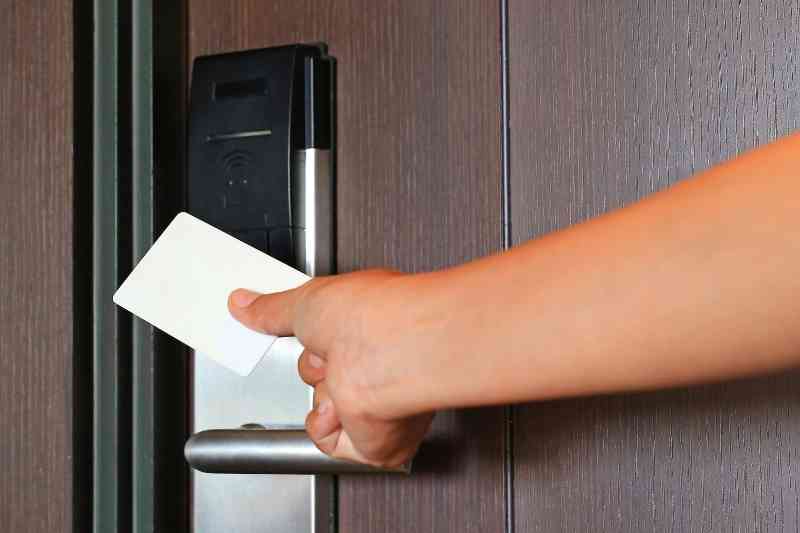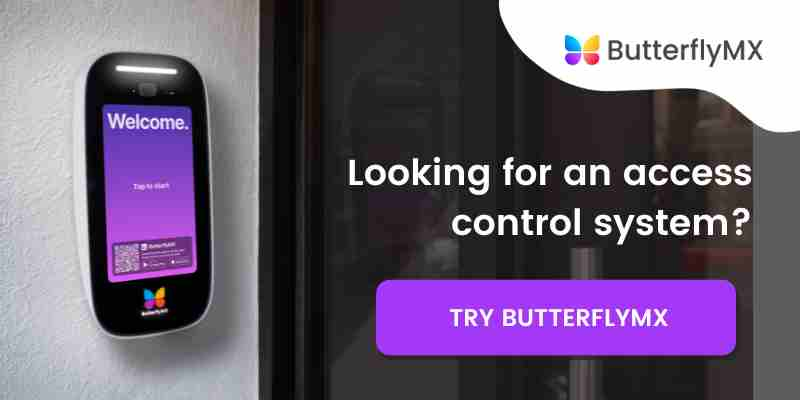
There are many types of door access control systems on the market, but most of them fall into one of two categories:
- Open access control systems
- Proprietary access control systems
But what’s the difference between an open access control system and a proprietary one? As an installer or integrator, how will those differences affect you and your clients? And is there a better option that combines both?
In this post, we explain what open access control is and what proprietary access control is. Then, we go over the types of access systems, how they work, and which is the best option for property owners, managers, and residents.
This post covers:
- What is open access control?
- What is proprietary access control?
- What’s better: open or proprietary access control?
- Hybrid access control systems
What is open access control?
Open access control is a method of access control that involves providers making their hardware and software easily accessible by, and interchangeable with, other providers’ products.
If you install an open access control system, you can run software from different providers on access control hardware like keypads or intercoms. For example, say you install an open access control system in a building. Then, one day, the provider you purchased it from stops maintaining the system. Instead of ripping out and replacing the entire system, you can keep the same hardware but switch to a different open-access software provider.
Example of open architecture
An ‘open architecture’ school of thought is popular in other computer-based industries. You might be familiar with other examples of open architecture, the most famous of which is the USB stick.
You’ve probably used a USB stick to store and transfer data between different computers. For example, even though Dell and HP are different laptop manufacturers, you can easily use a USB stick on both a Dell and an HP computer. That’s an example of how open architecture can facilitate collaboration between companies in the same industry.
Watch how ButterflyMX works:
What is proprietary access control?
A proprietary access control system is any system whose hardware only works with one provider’s software.
In contrast to open access control, the manufacturer of a proprietary access control system emphasizes uniformity and security. Under proprietary access, only the manufacturer can change the inner workings of the system.
In a proprietary access control system, you can’t run other software on your hardware except the software already provided by the manufacturer. But proprietary access does have a few advantages. Using a proprietary access control system, you’ll likely increase security and reduce your vulnerability. You’ll also have a smoother, more uniform user experience because you won’t be juggling two separately designed systems.
Example of proprietary architecture
Apple is likely the most famous example of a proprietary, ‘walled garden’ approach.
It’s incredibly easy to use a MacBook alongside an iPhone, an Apple Watch, or other Apple products. But using Apple products with other providers’ technology is more difficult. For example, some Apple MacBooks don’t have any built-in USB-A slots; instead, you’ll have to use an external adapter to use a USB stick with those MacBooks.

What’s better: open or proprietary access control?
If you’re deciding between a proprietary and an open system, consider how you want to manage your property’s door access control system.
- Choose an open access system if you value collaboration and integrations.
- Choose a proprietary one if you prefer to emphasize security and the user experience.
While an open system grants you access to more features, there’s a chance your clients will get confused if there’s a mismatch between access control software and hardware. Your customers won’t experience that confusion if you’re using a proprietary access control system.
But that might come at the cost of having to replace the whole system outright. If your client wants a new feature, they’ll need an entirely new system instead of simply using other software with a proprietary access control system.
To provide the best access control experience for your property owners, managers and residents, you should choose a system that combines the best strengths of both proprietary and open access control systems: a hybrid system.
Hybrid access control systems
A hybrid access control system takes traits from both proprietary and open access control systems. Hybrid systems create a more convenient and comprehensive experience for property residents, managers, and staff.
Proprietary access control systems emphasize the strengths of your hardware by guaranteeing end-to-end control over every aspect of a user’s experience. And open access, on the other hand, emphasizes software. Open access systems integrate with many other building management systems, including video cameras, smart locks, and property management software.
So, the best access control system is a hybrid access control system, which gets maximum utility out of both software and hardware.
The best hybrid access control systems run proprietary software on proprietary hardware. But they also follow open access principles by supporting third-party integrations and cloud-based management. This is the best option. You’ll enjoy the flexibility of an open access control system while maintaining the control and consistency that come with proprietary access.
The best of both worlds: the ButterflyMX access control system
Using the ButterflyMX hybrid access control system, you’ll capitalize on the benefits of both open and proprietary access systems. ButterflyMX combines the uniform user experience of a proprietary access control system with the integration capabilities of open access.
We’ve developed our hardware and our software by blending the ideal traits of both open and proprietary access. Our goal is to provide a unified access experience for your clients, no matter which type of system they have. With ButterflyMX, you’ll no longer have to mix, match, and create confusion by having one access control system for your front door and another for your indoor amenities.
Using our suite of integrated keypads and intercoms, you can give your customers a cohesive, intuitive access experience through their entire property. For example, your customers will appreciate features like the ability to issue a single PIN code that works seamlessly across all of our access devices — intercoms, keypads, and smart locks.
And with ButterflyMX, you’ll still enjoy the benefits of open access. We integrate with a variety of proptech hardware and software to save your staff time and improve the resident experience. For example, you can integrate ButterflyMX with your property management software. Our system will automatically update to reflect changes in your client’s rent roll. So, property staff can spend less time on paperwork when moving residents in and out and more time delighting residents.
Takeaways
- Open and proprietary access control systems differ based on how much control a manufacturer wants to cede to other software providers.
- An open access control system will more easily integrate with other software. In contrast, a proprietary system only allows the original manufacturer to make software changes.
- Both open and proprietary access systems have their own pros and cons.
- If you want an option that combines the benefits of both systems with none of the drawbacks, choose a hybrid access control system like ButterflyMX.

